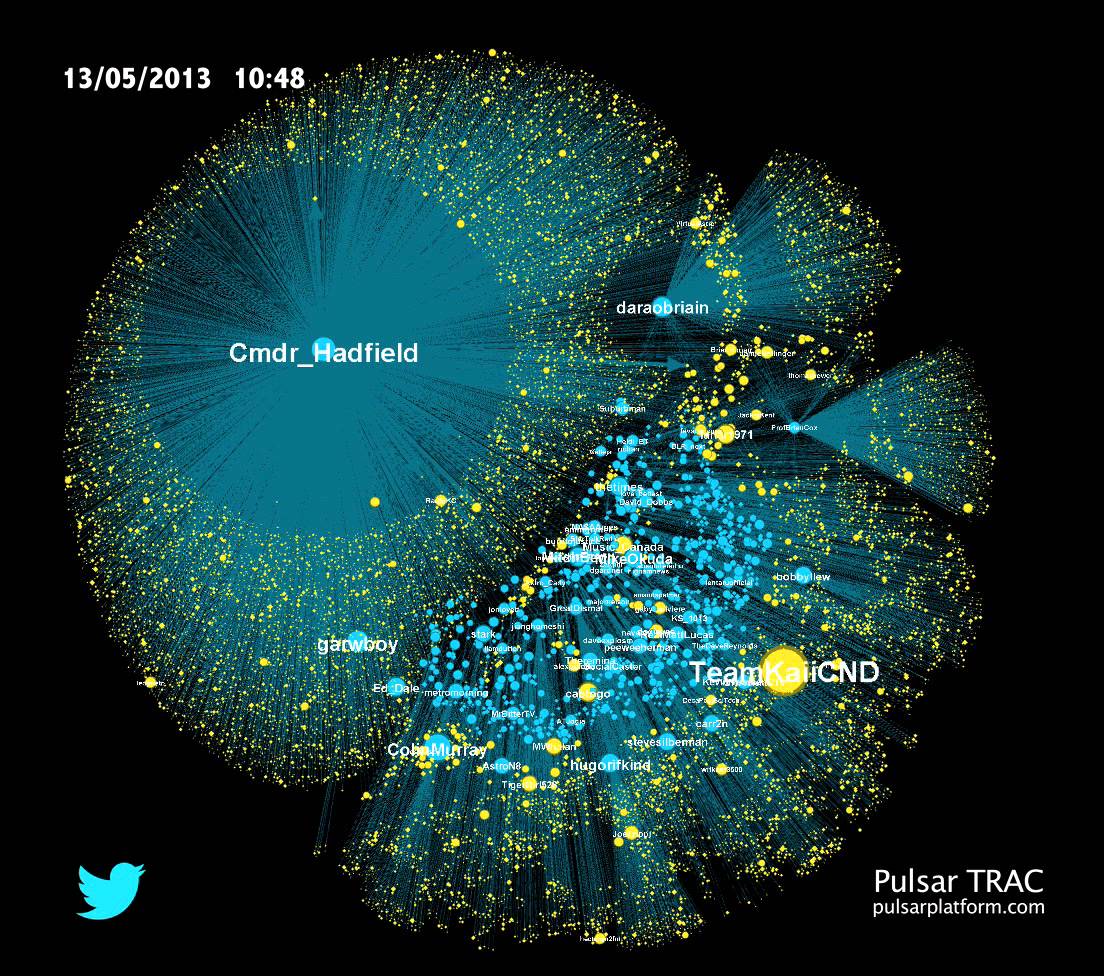There are various parameters that determine whether a video will go viral or not. The content plays a role of course but who uploads the video is also important. What do networks have to do with a video going viral?
In a previous article we presented the mathematics behind this phenomenon, in this article we show some visualisations of a video going viral on social media!
Viral network
Twitter visualised in 2013 how three video's went viral on the Twitter network. A blue dot in the network is a user who tweets the video, and a yellow dot is a user who retweets the video. The bigger the dot is, the more followers that user has. The visualisations begin with one blue dot: the original Twitter message. Then the network of users who tweet the video starts growing, until it goes viral!
One of the video's that Twitter studied was a music video made by the astronaut Chris Hadfield in the International Space Station. You see immediately that it is not so weird that this video went viral: it is the first music video that is recorded in space! The video spread within a couple of hours on the whole web. Further we see that Chris Hadfield himself is the one who spreads his tweet to a large number of people.
Hubs
People like Chris Hadfield are called hubs: people with many followers who play a central role in the spread of news in a network. These people can make a message go viral just by themselves. An interesting fact about hubs is that they can also make less interesting videos spread very fast. This short video about Ryan Gosling who does not want to eat his cornflakes, is one such example. At the beginning the video spreads very slowly. But in the end a couple of hubs pick it up and then it goes viral!
Viral through groups of friends
Your videos can thankfully still go viral even if you don't happen to have any hubs in your social network! The following video from a marketing campaign of Dove is such an example. In the visualisation below you can observe that this video goes viral much slower than the other two videos above. We also see only a few hubs in the network. This video spreads slowly from one group of friends to another until it goes viral.
Hence we observe that there are various reasons a video can go viral. The content is not always the most important reason, sometimes the structural properties of the network, for example the existence of hubs or groups, can also make a video go viral!
This short article is a translation of this article from my blog on NEMO Kennislink!






